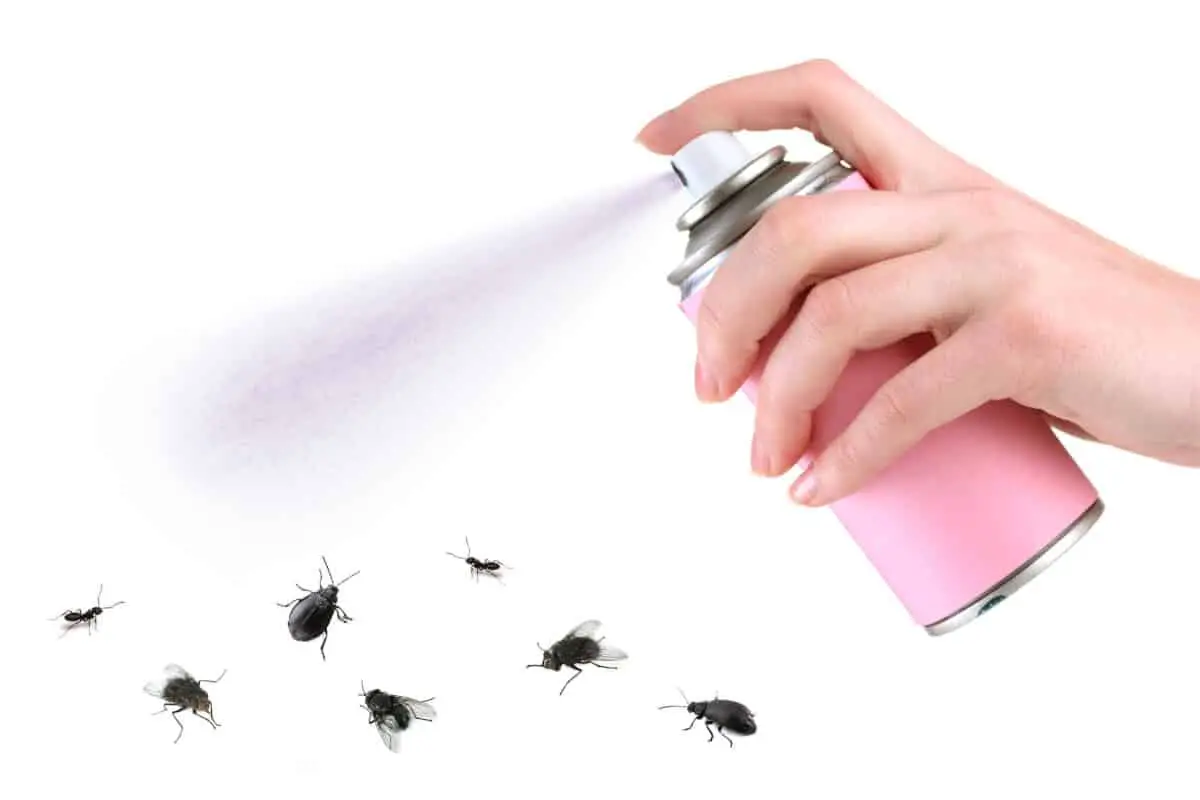If you use fly spray indoors, you might have wondered whether or not it will hurt your indoor plants. After all, some plants are delicate, and household chemicals can be very harsh when they come into contact with living tissue.
So does fly spray harm indoor plants? The answer is no. Fly spray should not harm indoor plants. However, you should check the ingredients of your fly spray for dichlorvos, which has been known to be damaging to plants and is also highly toxic to people as well.
Fly spray can be used safely around indoor plants, but there are a few considerations you should take into account before you do. Read on to find out more about how fly spray interacts with indoor plants and what you can do to keep them safe.
Fly Spray Should Not Harm Indoor Plants
Most commercial fly sprays that you find in the pest control section of a grocery or home improvement store should not be damaging to indoor plants. These sprays are designed to be used in a household around people and pets, so they are pretty safe.
The major concern with using household fly sprays is more for pets than plants. Most household fly sprays are made with pyrethrin, which is fairly safe for people.
However, this insecticide is toxic to cats, so it should not be sprayed around them and is dangerous to fish in aquariums if it contaminates the water. So keep household fly sprays away from your aquariums, and keep your cats away from them.
As far as houseplants go, your houseplants should be fine, though. Most fly sprays aren’t going to hurt them.
Avoid Residue on Indoor Plant Leaves
While fly sprays won’t necessarily harm indoor plants, care should still be taken not to allow residue to accumulate on the leaves of your indoor plants. This can be fly spray, dust, or residual water from a misting.
The reason is that plants use the surface of their leaves to manufacture food and energy for themselves, so having residue on their leaves is pretty much like throwing a bunch of mud on some solar panels. The solar panels will still work but not at the efficiency they could.
To avoid an accumulation of residue on your indoor plant leaves, rinse the plant under a sink spray faucet or with a spray bottle of warm or room-temperature water, then wipe it dry with a microfiber cloth. Remember that most houseplants are tropical, so they don’t like cold water.
After spraying a fly spray around your indoor plants, it might be a good idea to take this time to wipe down your plants leaves so that no residue of the fly spray is left behind.
Indoor Plants for Fly Control
If you are having a problem with flies and gnats in the house to the point you are resorting to fly spray, but also love indoor plants, you should know that you can kill two birds with one stone by purchasing indoor plants that can help you keep your fly population down.
These plants are carnivorous plants, such as Venus fly traps and pitcher plants. While they typically need bright light, carnivorous plants are a good choice as indoor plants because they can do well in very poor soil, so they don’t need much fertilizing.
And unlike other indoor plants, carnivorous plants feed themselves!
These plants use lures to draw flies in the house towards them to feed on, so by getting a few carnivorous plants as indoor plants, you will be taking care of your fly problem at the same time with no need for potentially toxic sprays in your home.
Read the Label
All fly sprays are different, though some use the same basic active ingredients. Pyrethrin and dichlorvos are two common ones.
The insecticides used in fly sprays have varying levels of toxicity with regards to people, animals, and plants, so like any household chemical, you should read the directions and the warning label carefully to make sure you know exactly what you’re putting in your house.
In many cases, fly sprays will indicate on their labeling whether or not they are toxic to animals and plants. If you are considering which fly spray to use and see that it is toxic, you might want to steer clear and choose something else, as there are many non-toxic varieties available too.
Some Plants are Sensitive
When it comes to indoor plants, some of them are more fragile and sensitive than others. While
the majority of fly sprays will not hurt the majority of indoor plants, there are exceptions to prove
every rule.
These plants exhibit phytotoxicity in the presence of certain chemicals, which is similar to a chemical burn or irritation in humans.
Obviously, this isn’t great for the plant, but there are so many different species it is difficult to anticipate which plants will have a bad reaction. You can think of it as an allergic reaction. Most people (and plants) will not have an allergic reaction to certain stimuli, but a few will.
Protecting Plants from Potential Phytotoxicity
If you suspect that your indoor plant might be too fragile to handle the residue of a fly spray, simply remove the plant from the room you intend to spray down (as long as it is not too large) and then replace the plant when you’re finished and after the spray has settled in a few minutes.
That way, you don’t have to worry about residue on the foliage. If you have a large plant, you can always put a plastic trash bag over the top of the plant while spraying the room, and then pull it off to discard it after you’re done.
Plant-Friendly (and Plant-based) Alternatives to Fly Sprays
If you are really worried about insecticides around your indoor plants and your home, there are several plant-friendly and plant-based alternatives for using fly sprays that can help repel flies from the home.
- Plant basil indoors. Flies do not like the aromatic oils given off in the air around basil (these same oils that make it smell so wonderful), and basil does well indoors, provided it gets enough light. Keep some in planters around the house to deter flies.
- Spray your home with eucalyptus, lavender, peppermint or lemongrass oils. Or use an oil diffuser. Not only do these aromatic oils smell great to most people, but they also deter flies, who do not like the smell of them.
- Keep potpourri bowls of dried cloves. Like the solutions mentioned above, the aromatic oils in cloves are a natural deterrent to flies. Some people do not like the smell of cloves, however, so if you’re one of them, try one of the other aromatic oils.
- Use cinnamon as
potpourri . Like cloves, flies can’t stand the stuff. Cinnamon is also a great way to keep ants out of your home–just sprinkle it on the thresholds and at the windowsills, and they’ll steer clear! Make sure it’s fresh forbest results. - Plant mint, marigold, and lavender. While marigolds and lavender might grow better outdoors initially, you can take cuttings of them and place them in bouquets around the house to deter flies. Mint can be planted indoors but needs a bright, sunny room.
Use Fly Spray without Fear Around Indoor Plants
For the majority of indoor plants, you don’t really have to worry about using fly sprays or other insecticides as long as you don’t allow the residue of the insecticides to accumulate.
However, as you can see, there are plenty of other ways you can control flies indoors without using chemicals. You can even use fly control as an excuse to buy more indoor plants!



Subscribe To Our Newsletter
Join our mailing list to receive news and updates. Don't worry. We will not smap you ;)
You have Successfully Subscribed!